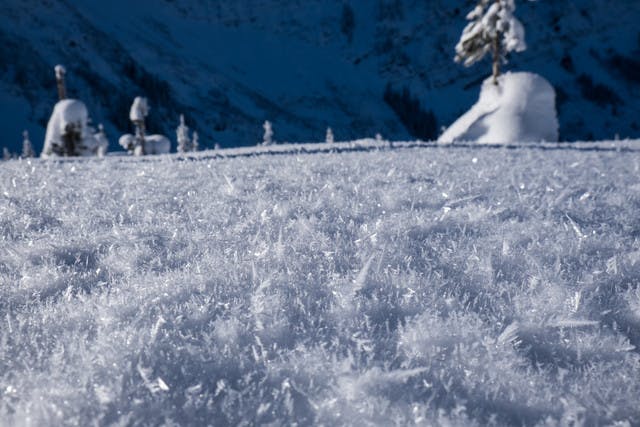- Date
- vendredi 16 décembre 2016
Do you speak red-neck, sled-neck or shred-neck? Do you brap-up to the alpine, lay down some epic figure 8s, or shred the gnar?
There are a lot of mountain sub-cultures out there, all with their own unique lexicons that let us communicate smoothly with people who are embedded in the same culture. Using local expressions helps us connect with like-minded people, and shows we’re on the same wavelength with the folks we ride with. And this is a really good thing in many ways. But when it comes to avalanche conditions, it’s important that we all speak the same language. The more complicated things get, the more this is true.
Our backcountry conditions are going to get a lot more complex over the next several days. This is often the case when we move from a period of cold, clear weather to a stormy pattern. Large, weaker snow crystals (feathery surface hoar and/or sugary facets) form on and near the snow surface during the cold, clear periods. When these crystals get buried by sufficient snow, they form a weak layer which leads to dangerous avalanche conditions.
To help make sure we’re all on the same page, I’d like to introduce two terms I think you’re going to hear about (or read in our forecasts) over the next couple of weeks.
The first is Persistent Slab Problem. This is the avalanche problem that sets up when a weak layer becomes buried by enough snow to form a solid upper layer of snow (a slab). Generally we need 30-40 cm of settled snow on top of a weak layer before we start to see persistent slab problems develop. The more snow builds up over the weak layer, the bigger the avalanches will be. Once there’s 50-80 cm snow over the weak layer, large, dangerous avalanches become likely. Eventually, the weight of snow over the weak layer makes it less likely to be triggered, but we often go through a difficult period with a deeply buried weak layer a metre or more below the surface that has the ability to produce very large avalanches in isolated locations.
The second term is Incremental Loading. This refers to when we get light to moderate amounts of new snow over a series of storms that slowly and steadily builds up that solid upper slab layer of snow, adding weight, or load, to the weak layer below. In this scenario it can take longer for conditions to build up to a critical point where slab avalanches become likely. Predicting exactly when that point has been reached can be tricky. I’ve got to say, sometimes it’s easier when the storms come through in one big punch—in this scenario, avalanche danger goes through the roof for a short period, then tends to come down again to a more manageable level. Unfortunately, the current weather pattern looks like it will lead to incremental loading in many areas.

Surface hoar is beautiful when it’s on the surface, but can be deadly once it gets buried by 30 cm+ new snow. Facets are not so obvious (they’re smaller, square-ish crystals), but can also form dangerous weak layers. Photo: Jennifer Coulter.
Depending on how the weather unfolds, we could be setting ourselves up for some tricky conditions that could coincide with the Christmas/New Year break. There’ll be more on this subject for sure, but in the meantime, keep checking avalanche.ca for the latest conditions updates. Hit the Problems tab on the avalanche forecast and look for whether a persistent slab problem is listed. Look in the Snowpack Summary section in the Details tab for mention of incremental loading. Now, at least, you know what we mean when we throw these words at you.
James Floyer.